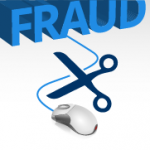 If you’re buying traffic for your website, the unfortunate truth is you’re increasing the risk for fraud. How can you balance out the important task of bringing in traffic without risking your accreditation? The IAB (Interactive Advertising Bureau) has some important and useful tips. With their very own team dedicated to this purpose alone, the IAB Traffic of Good Intent Task Force, these tips come from the top.
If you’re buying traffic for your website, the unfortunate truth is you’re increasing the risk for fraud. How can you balance out the important task of bringing in traffic without risking your accreditation? The IAB (Interactive Advertising Bureau) has some important and useful tips. With their very own team dedicated to this purpose alone, the IAB Traffic of Good Intent Task Force, these tips come from the top.
Why does purchasing traffic mean unavoidable fraud?
Buying traffic, especially from a non-organic source, opens up your website to non-human, or robotic traffic. These bots usually browse sites to build their targeting cookie pool completely undetected. Even if you go the organic route, it’s highly likely that you’ll have non-human traffic on your properties which can open the gate further to users with browser tools and applications designed for just this.
Is there a responsible way to do this? Maybe you want to extend your traffic or maybe you’ve committed to delivering more ad impressions than you can. In general, the IAB says,
“Our recommendation is to avoid purchasing traffic, which puts your long-term success at risk for short-term profits. But if you must increase inventory, the following guidelines can help mitigate your risk:
– As a premium publisher purchasing traffic, pay the higher price to buy quality.
– Look for a natural affinity between your content and the purchased audience.
– Use technology to detect non-human traffic on all of the traffic you are buying.
– Don’t lower your standards when performance slips below your goals.
– Know your consultants, and where they are sourcing traffic.”
Need some more tips? The following can be used as a guide to select the best traffic sources for your site. These should help you stay focused on the bottom line – increasing visits while keeping fraud to a minimum.
Site owners should always try to be aware of the traffic coming to their site, but even more so when traffic is purchased. Therefore, you want the site you’re buying traffic from to do the same. The methodology they use to do so should cover how they determine suspect fraudulent traffic, and then flag, investigate and remove it.
As a rule of thumb, websites should provide a safe environment for advertisers and consumers. This can be accomplished by actively screening for malware. Each traffic source should be able to provide information on their approach.
It might seem obvious, but make sure that unusually large volumes of traffic and poorly performing placements are investigated for malicious virus activity.
Do you purchase traffic? What safety precautions do you take against traffic fraud? Share your experience with us on Facebook, Twitter and Google+.

